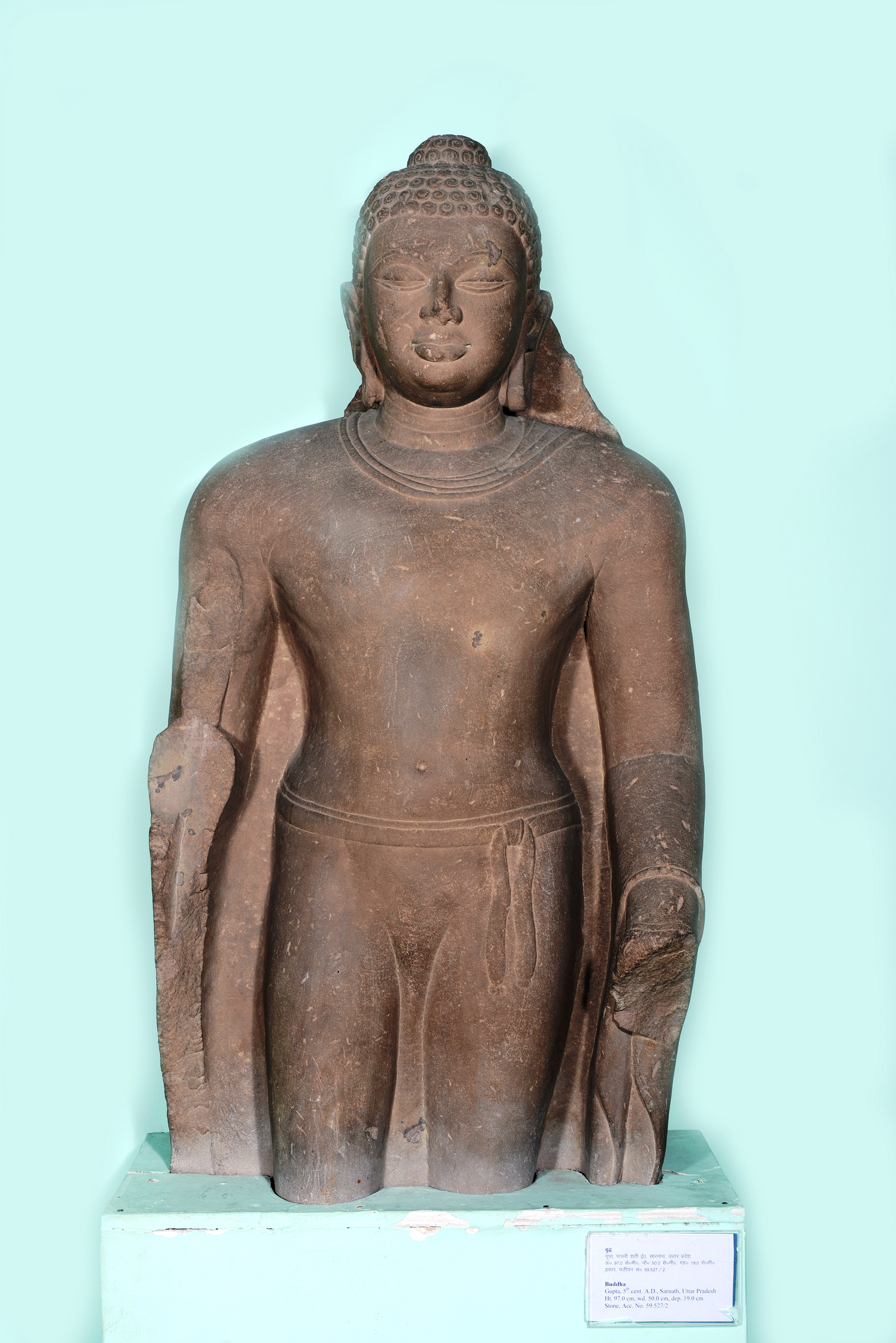Buddha- Sarnath
Original Location: Varanasi, Uttar Pradesh
Present Location: National Museum, New Delhi
Date: 5th century CE
Period: Ancient
Material: Stone
Objects: Sculpture
Style: Gupta
Dimensions: H 91.1 x W 30 x D 12 cm
Credits: National Museum, New Delhi
This peaceful looking sculpture of Buddha was originally from Sarnath, Varanasi in Uttar Pradesh. It belongs to the Gupta dynasty which dates back to 5th century CE. It is made of stone and stands tall with a height of 91.1 cm. It is currently placed at the Gupta gallery in the National Museum, New Delhi.
The Gupta period witnessed substantial growth in the number and size of Buddhist monasteries across its kingdom. While Gupta kings are generally linked with the promotion of Brahmanism, some of them even extended patronage to Buddhism. The text called Manjushri Mula Kalpa which dates back to 800 CE points out that Narasimhagupta became a Buddhist monk and spent his life in meditation until he finally gave up his life through dhyana.
Sarnath was considered to be among the holiest sites within the Buddhist faith in the 21st century. It was at Sarnath that Buddha gave his first sermon, set the wheel of dharma in motion and it is also the place of birth for the Sangha (the religious followers of Buddha). Ashoka is believed to have erected the Dhameka stupa here in 249 BCE. In 12th century BCE, the wife of King Govinda Chandra erected the Dharma-Chakra-Jina Vihar monastery at Sarnath as well.
 Government of Indiaa
Government of Indiaa


 Recognizing the ongoing need to position itself for the digital future, Indian Culture is an initiative by the Ministry of Culture. A platform that hosts data of cultural relevance from various repositories and institutions all over India.
Recognizing the ongoing need to position itself for the digital future, Indian Culture is an initiative by the Ministry of Culture. A platform that hosts data of cultural relevance from various repositories and institutions all over India.
